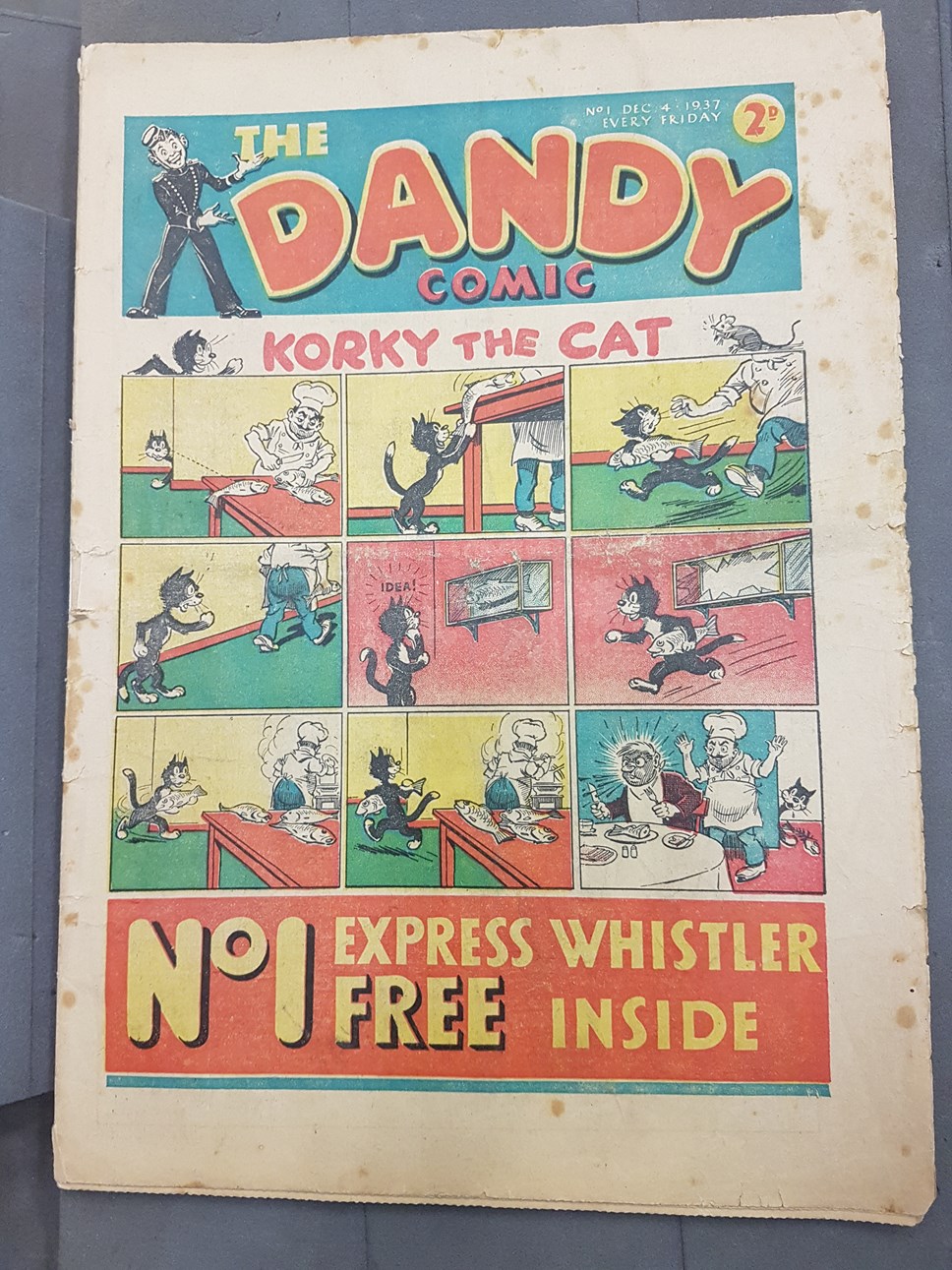
First ever appearance of Desperate Dan added to national collections
The National Library of Scotland has filled a crucial gap in its collection of The Dandy weekly comics following its acquisition of the first-ever copy.
The Dandy Comic was first published in December 1937, costing two pennies for 28 pages. It was an instant success, selling more than 480,000 copies.
General Collections Curator, Ian Scott, said:
“In many ways, it was the first modern British comic, and should be of great interest to anyone researching popular literature. Today, it is estimated there are only around 20 copies of the first edition known to be in existence. Which makes this copy one of the rarest items in the Library’s collections.
“We were pleased to add this rare first edition to our holdings – ensuring its preservation for future generations. We’re actively filling the gaps in our holdings of British comics and annuals. They tell us so much about the social mores of the time.”
However, significant gaps of The Dandy in the national collections remain, particularly from 1937 – when the first Dandy was published – up until the 1970s.
Mr Scott adds:
“We appeal to anyone who may have pre-1970 editions of The Dandy – or indeed its sister publication, Beano – to consider adding them to the national collections.”
The first edition of The Dandy Comic was published on 4 December 1937. It was edited by then 25-year-old Albert Barnes, who remained as editor until he retired 45 years later in 1982. He had a large chin, which led many to speculate that his was the inspiration for Desperate Dan’s jawline.
As well as the character Desperate Dan, which was illustrated by Dudley D Watkins, The Dandy featured Korky the Cat and Keyhole Kate. It was the first time most readers had ever seen dialogue contained in speech bubbles – up until then, dialogue was mostly found in the text below the illustrations in British comics. Watkins’ illustrative work on The Dandy, Beano, Oor Wullie and The Broons was deemed of such importance to public morale that he was excused war service, but still served as a Reserve Police Constable in Fife during the Second World War.
The Library holds complete sets of The Dandy and Beano annuals, which are perennially popular Christmas gifts. Anyone can view these, and early editions of the comics, at the Library’s Reading Rooms.
Contact Information
Notes to editors
Dundee-based publishers, D.C. Thomson were known for the ‘Big Five’ text-based adventure stories for boys: Adventure, The Rover, The Wizard, The Skipper and The Hotspur which were launched in the 1920s and early 1930s. It was decided to branch out into humour comics, with The Dandy Comic planned to be the first in a second suite of titles, followed by Beano in 1938, and The Magic Comic in 1939.
The Magic Comic was put on hold in 1941 due to paper shortages during the Second World War. Its editor, Bill Powrie, had enlisted and was killed on active service aged 26. The Magic was relaunched in the 60s as a nursery title. The Dandy and Beano were reduced to bi-weekly frequencies during the War, and reverted to weekly in 1949. It is believed The Topper and The Beezer were the two other titles suggested for the ‘Big Five’, but the grouping never materialised.
The National Library of Scotland
The National Library of Scotland is a major European research library and one of the world’s leading centres for the study of Scotland and the Scots – an information treasure trove for Scotland’s knowledge, history and culture.
The Library’s collections are of world-class importance. Key areas include rare books, manuscripts, maps, photographs, music, moving images, official publications, science and technology, and modern and foreign collections.
The Library holds more than 31 million physical items dating back over 1000 years in addition to a growing library of digital material. Every week the Library collects around 5,000 new items. Most of these are received in terms of Legal Deposit legislation, allowing the Library to claim a copy of everything published in the UK and Ireland (everything from children’s books to science journals, election leaflets to magazines and websites). www.nls.uk / @natlibscot / facebook
